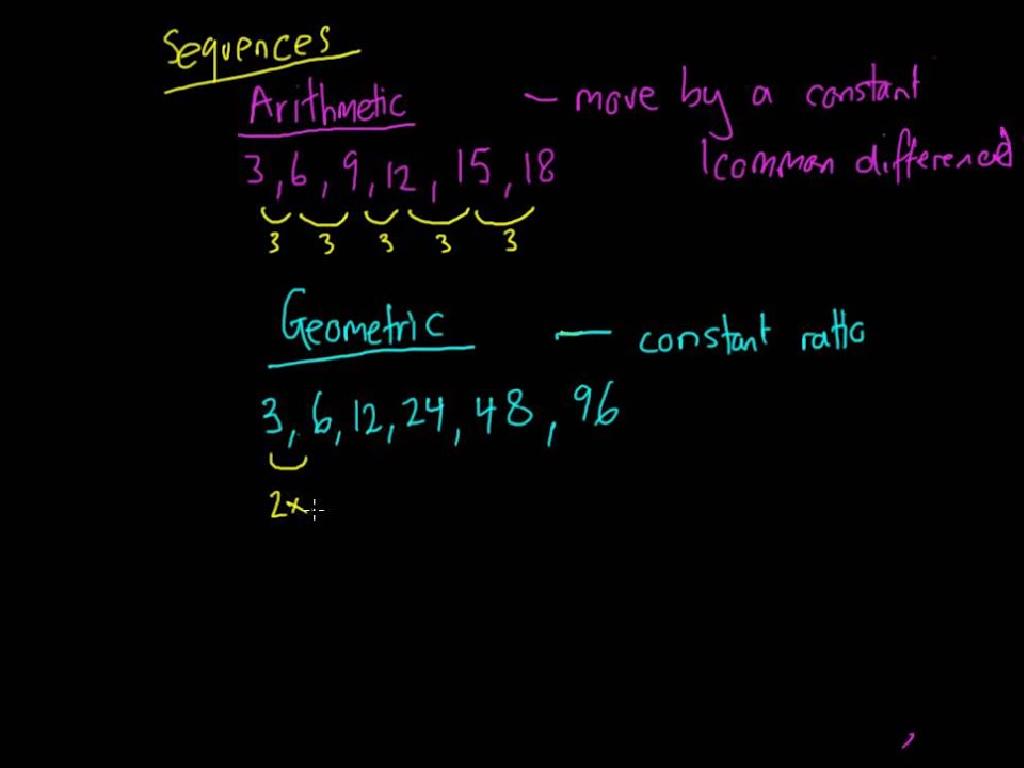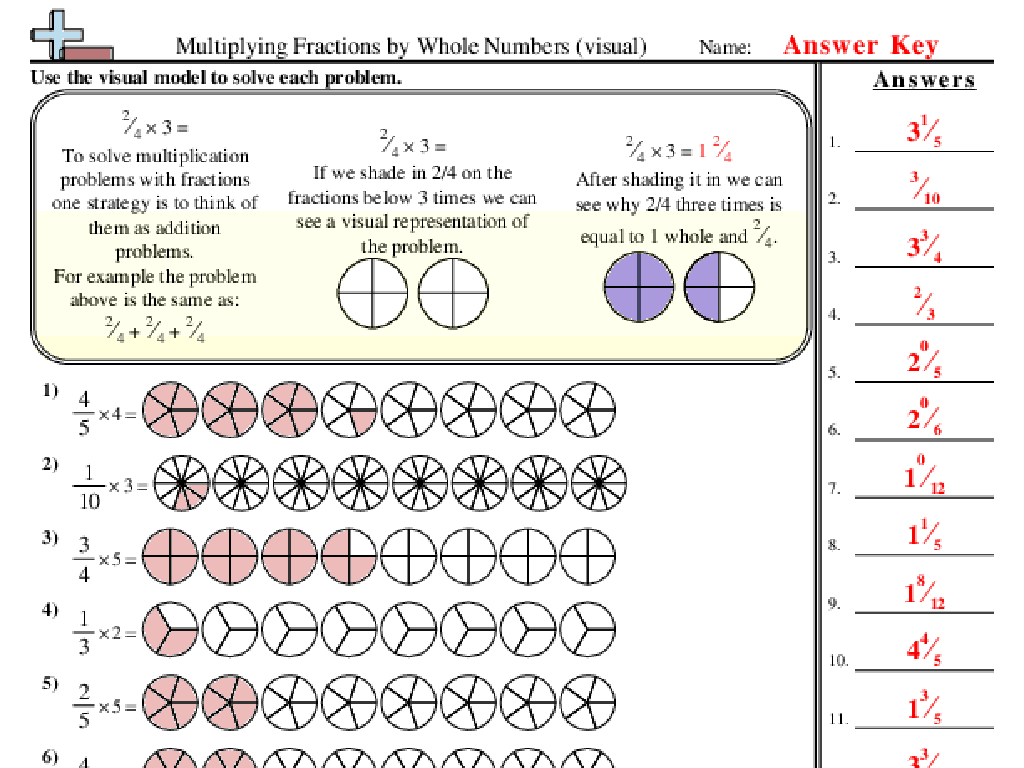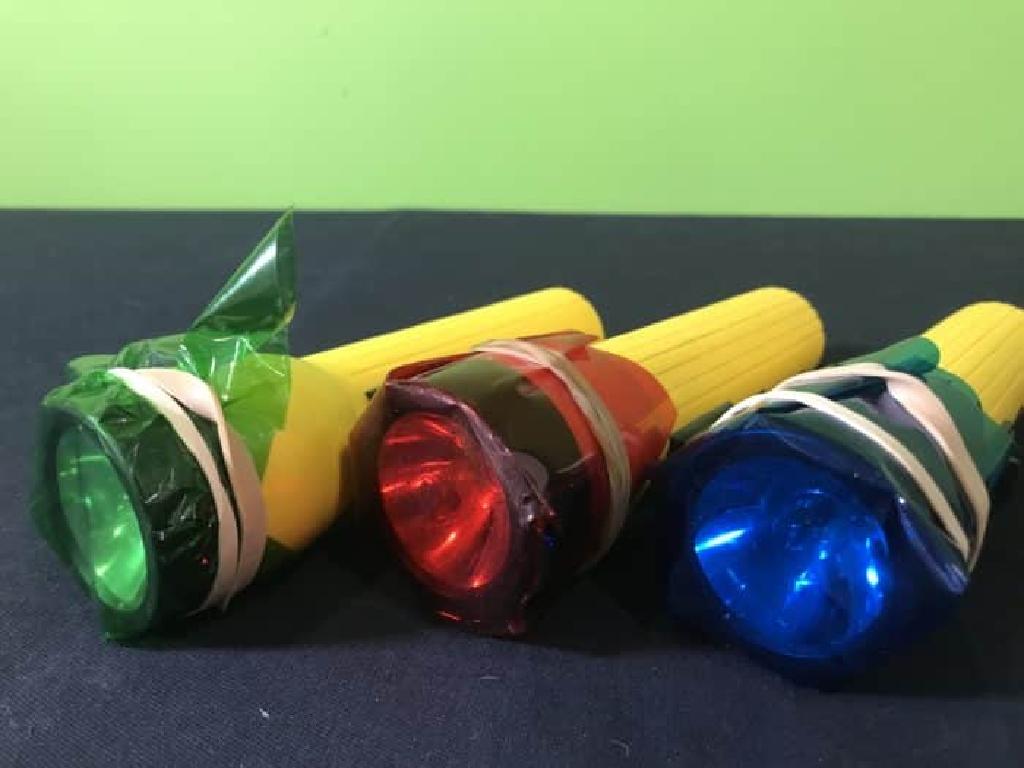More - Compare By Matching Up To 5
Subject: Math
Grade: Kindergarten
Topic: Comparing Up To 5
Please LOG IN to download the presentation. Access is available to registered users only.
View More Content
Comparing Numbers: More or Less
– Learn ‘More’ and ‘Less’
– ‘More’ means a bigger amount, ‘Less’ means a smaller amount
– Use pictures to compare
– Which group has more apples?
– Play games to practice
– Matching game with number cards
– Understand numbers up to 5
|
This slide introduces the concept of comparing quantities to determine which is more or less. Start by explaining the terms ‘more’ and ‘less’ with simple definitions. Use visual aids like pictures of fruits or toys to illustrate the concept. For example, show two groups of apples and ask the students to identify which has more. Incorporate interactive games such as matching number cards to objects to reinforce the concept. Ensure that all activities are focused on numbers up to 5 to keep it age-appropriate for Kindergarten students. The goal is to make learning about numbers fun and engaging, using relatable items and playful activities.
Understanding ‘More’: Comparing Quantities
– ‘More’ means a larger amount
– Use eyes to spot the group with more
– Observe two groups and compare visually
– Practice with picture comparisons
– Look at pictures of apples, balls, etc. and count
– Engage in a ‘More’ matching activity
– Find and match objects that show ‘more’
|
This slide introduces the concept of ‘more’ to Kindergarten students, which is fundamental in understanding quantity comparison. Start by explaining that ‘more’ indicates a greater number of items in one group compared to another. Encourage students to use their observation skills to visually compare groups of items. Use simple, colorful pictures to illustrate this concept, such as a group of 3 apples versus 5 apples. For the activity, provide various sets of objects or pictures and ask students to match the set that has ‘more’ items. This interactive approach helps solidify their understanding of the concept through practical application. Remember to praise their efforts and correct gently, reinforcing their learning experience.
Let’s Play a Matching Game!
– Match objects in two groups
– Each object needs a friend
– Find the group with extras
– Look for the group with objects that don’t have a pair
– That group has more!
|
This slide introduces a matching game to help students understand the concept of ‘more’. Start by explaining that they can compare two groups of objects by matching them one-to-one. Each object from one group should be paired with an object from the other group. After all possible matches are made, the group with objects that don’t have a pair is the group with ‘more’. For the activity, provide students with physical objects or pictures that they can match. Possible variations of the activity could include using different colored objects, shapes, or items from nature. Encourage students to explain their matching process and how they determined which group had more. This hands-on activity will help solidify their understanding of comparison by matching.
Let’s Count Together!
– Count objects in groups
– Look at pictures and count each item out loud.
– Bigger number means more
– Compare two groups to see which has more.
– Count using your fingers
– Hold up fingers for each item counted.
– Practice makes perfect
|
This slide is designed to help Kindergarten students understand the concept of comparing quantities by counting. Start by counting objects in a group together with the students, ensuring they understand that each object corresponds to one number. Reinforce the concept that the group with the larger count has ‘more.’ Encourage students to use their fingers to count, which provides a tactile and visual aid to help them grasp the concept. Practice with different sets of objects to build their confidence and understanding. The activity should be interactive and fun, allowing students to engage with the material and learn through doing.
Which Group Has More Toys?
– Observe two groups of toys
– Count toys in Group A and B
– Group A has 3 toys
– Three toys can be teddy bears or blocks
– Group B has 5 toys
– Five toys might be cars or dolls
|
This slide is designed to help Kindergarten students understand the concept of ‘more’ by comparing quantities. Start by showing them two distinct groups of toys. Encourage the students to count the toys in each group. For Group A, use a visual example of 3 toys, such as teddy bears or blocks, and for Group B, use 5 toys, like cars or dolls. Ask the students to identify which group has more toys. This activity will help them visually compare and understand the concept of ‘more’ in a fun and engaging way. For the class activity, you can bring in actual toys or use pictures to help them count and compare. Make sure to praise their efforts and correct gently if they make mistakes.
Your Turn to Find ‘More’
– Observe the pictures carefully
– Count items in each picture
– Use your fingers to count each item
– Decide which picture has more
– Remember, more means a bigger number
– Share your answer with the class
|
This slide is an interactive activity for students to practice comparing quantities by counting items in pictures. Display pictures with different numbers of items, up to 5, and ask the students to count aloud. Encourage them to use their fingers or objects to keep track of the count. After counting, students should determine which picture has a greater number of items. Reinforce the concept that ‘more’ refers to the picture with the larger count. Have students share their answers and explain their reasoning. This activity helps to develop counting skills and the understanding of comparison in a fun and engaging way. Prepare several sets of pictures to ensure all students have the opportunity to participate.
Class Activity: More or Less Game
– Play a game with colorful blocks
– Receive two groups of blocks
– Count and compare block groups
– Does group A or B have more? How can you tell?
– Discuss: Which has more?
|
This interactive class activity is designed to help Kindergarten students understand the concept of comparing quantities up to 5. Provide each student with two small groups of blocks, ensuring that the groups have different numbers of blocks but no more than 5. Instruct them to count the blocks in each group and determine which group has more. Encourage students to use their fingers to point as they count and to verbalize their thought process. After they’ve made their decision, ask them to share their findings with the class. This will not only reinforce their counting skills but also their ability to compare quantities. Possible variations of the activity could include using different items like stickers or toys, comparing less instead of more, or even matching equal amounts.
Celebrating Our Learning!
– Understanding ‘more’ and ‘less’
– ‘More’ equals a bigger number
– If you have 5 candies and I have 3, you have more.
– Applauding your hard work
– Keep practicing at home!
– Try counting toys, books, or even snacks!
|
This slide is meant to wrap up the lesson on comparing quantities by using the concepts of ‘more’ and ‘less.’ Reinforce the idea that ‘more’ indicates a larger quantity of items. Praise the students for their effort and participation throughout the lesson. Encourage them to continue practicing these concepts outside of the classroom by counting objects they interact with every day, like toys or snacks. This will help solidify their understanding and make the learning experience more tangible and relevant to their daily lives.






